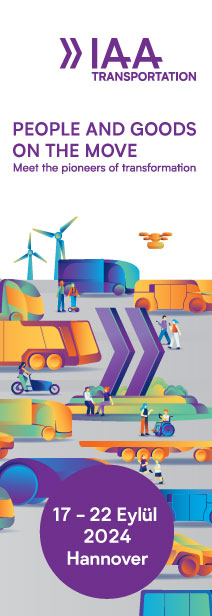The jury of Sustainable Bus Award represents seven European countries. The network,
indeed, consists of Mobilités Magazine (France), Busfahrt (Germany), Autobus (Italy),
OV-Magazine (Netherlands), InfoBus (Poland), Infotrucker (Romania), Carril Bus (Spain).
The jurors choose the winner vehicles after three evaluating steps. First, each juror
submitted a list of candidates. All the candidates passed through a first numerical
evaluation. Twelve vehicles (4 for each category) were shortlisted as finalists. Also
manufacturers were asked to fill detailed documentation with information about the
vehicles. Finally, each juror provided a detailed evaluation to each vehicle, considering
53 parameters split in the following groups: Engine, Transmission, Safety, Comfort,
Sustainabiliy.
 Below, the motivations of the jury.
Below, the motivations of the jury.
Sustainable Bus Award 2019 URBAN: Iveco Crealis 18 m In-Motion-Charging
‘In Motion Charging’ (IMC) technical solution turns trolleybus into a real alternative to
battery electric bus. Thanks to IMC, the vehicle can run in full electric mode where
there is no aerial infrastructure. Freed from the the permanent constraint (technological
and infrastructural) of the two-wire aerial line, trolleybus releases unexpected potentials.
Iveco Bus is one of the main actors in the trolleybus panorama, as demonstrated by the
more than 800 trolleybus units sold to date. The company unveiled at Buworld 2017 its
new trolleybus range, to which the awarded vehicle belongs. Crealis 18 m In-MotionCharging, powered by Skoda Electric, combines the electric overhead lines with a small on-board battery. This reduces complexity and costs, and no time is lost for recharging.
Sustainable Bus Award 2019 INTERCITY: Mercedes-Benz Citaro Ü Hybrid
The Citaro Ü Hybrid guarantees a 8.5 percent cut in fuel consumption with a reasonable
extra-cost. Mild hybrids represent a key element in the transition between diesel buses
and alternative drive vehicles. A compact electric motor is fitted between the internal
combustion engine (7.7 litres, 260 kW) and the automatic transmission (customers can
opt for ZF or Voith). The electric motor, the same model adopted as alternator/starter
on the new passenger car Class S, delivers 14 kW and 220 Nm torque. During braking, it acts as a generator and stores energy in two modules, with each module containing
16 doublelayer capacitors (supercaps). This is where one of the main Citaro Hybrid’s
new features comes in: it prides itself to be the first commercial vehicle powered not by
a high voltage network but by a separate 48 volt low voltage network, similar to that of
Mercedes hybrid passenger cars.
Sustainable Bus Award 2019 COACH: Volvo 9900
Sustainable Bus Award is based on a cross-cutting idea of sustainability, intended as
the ability to establish a positive image of the vehicle to the eyes of the general public,
and so increasing the appeal of collective passenger transport. A necessary step to
achieve a more sustainable environment by reducing the use of private passenger cars,
limiting pollution and traffic congestion. To this end, beyond some environment-related
parameters (recyclability of components and general environmental commitment of
the manufacturer), several aspects can come into play, such as safety, comfort, noise.
New Volvo 9900 is the outcome of a whole new project. Comfort level has been highly
increased, Cx has been reduced, Volvo Dynamic Steering remains a key feature for
its positive impact on driver’s physical conditions, enhancing passengers’ safety. The
transparent ‘window’ on the bottom of the front door allows a better side visibility.
Volvo Zone Management ensures that the coach comply with restrictions and specific
requirements depending on geographical position. The driver is updated when he or she
is in zero-emission or low-speed zones, and can adjust driving mode and take action
accordingly.










